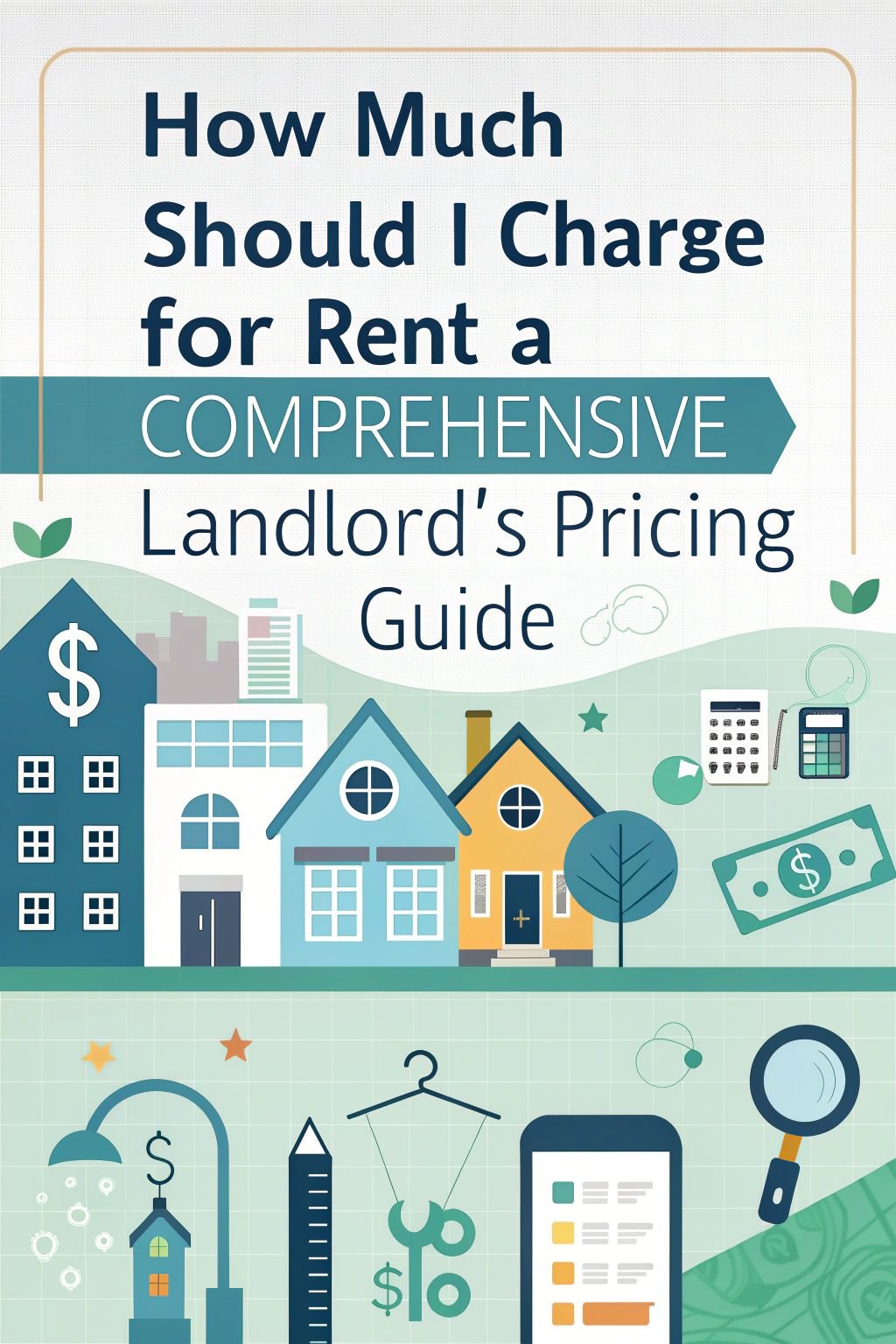Are you a landlord trying to figure out how much to charge for rent? Setting the right rental price is crucial for covering your property costs, making a profit, and attracting good tenants.
But with so many factors to consider, it can feel overwhelming to land on the perfect number.
Did you know the average asking rent in the US is around $1,900 per month? Of course, this varies a lot depending on where your property is located. This comprehensive guide will walk you through everything you need to know to confidently set your rental rate.
From using the 1% rule to analyzing market trends and factoring in property features, you’ll have all the tools to price your rental just right. Ready to become a rent-setting pro?
Key Takeaways
- Setting the right rental price is crucial for landlords to cover property costs, make a profit, and attract good tenants. The average asking rent in the US is around $1,900 per month, but this varies depending on the property’s location. Landlords can use the 1% rule (monthly rent should be 1% of the property’s value) and 2% rule (monthly rent should be 1-2% of the purchase price) as starting points for determining rent.
- Analyzing comparable properties, examining property characteristics and amenities, understanding local rent control laws, considering seasonality and market demand, and assessing financial needs and expenses are essential factors in setting rent accurately. Online tools like Zillow Rent Estimate, Rentometer, RentRange, and property management software can help determine appropriate rent prices.
- To calculate rent accurately, landlords can apply the 1% rule, use the price per square foot method (monthly rent divided by total square footage), and utilize online rent estimation tools like Zillow Rental Manager and Rentometer Pro. These tools provide insights into local market trends and help set competitive rental rates.
- Strategies for adjusting rent include keeping up with market trends by regularly analyzing comparable properties, implementing periodic rent increases of 2-5% while complying with local rent control laws and providing ample notice to tenants, and offering rent concessions such as free rent for the first month or waiving certain fees to attract tenants and boost occupancy rates.

To maximize your rental income, stay on top of market trends, implement periodic rent increases, and consider offering rent concessions. By employing these strategies, you can ensure your rental rates remain competitive and attractive to potential tenants.
Keep reading to learn more about how to effectively adjust your rent and boost your rental profits.
Keeping Up with Market Trends
To stay competitive and maximize your rental income, you must keep a pulse on the ever-changing market trends. Regularly analyze comparable properties in your area, noting their amenities, square footage, and rental rates.
Online tools like Zillow, Rentometer, and Apartments.com can provide valuable insights into current market conditions. By understanding what renters are willing to pay for similar homes, you can adjust your prices accordingly to attract quality tenants and avoid lengthy vacancies.
As a savvy landlord, adapt to seasonal fluctuations in rental demand. In many markets, summer months see higher demand and allow for increased rental rates, while winter months may require lower prices or special promotions to entice renters.
Stay informed about local economic factors, such as job growth, population shifts, and new developments, which can all impact the rental market. By staying attuned to these trends, you can make data-driven decisions about when to raise or lower rent, ensuring your investment property remains profitable and competitive.
Implementing Periodic Rent Increases
Keeping up with market trends is crucial for maximizing your rental income. Implementing periodic rent increases is a strategic way to ensure your rental rates align with the current market.
Here are some key strategies for implementing periodic rent increases:
- Research local rent control laws and regulations to ensure compliance with legal requirements for rent increases, such as notice periods and percentage caps.
- Analyze market trends and comparable properties annually to determine if a rent increase is warranted based on factors like demand, inflation, and property improvements.
- Consider raising rent by a modest percentage, typically between 2-5%, to minimize tenant turnover and maintain a positive relationship with renters.
- Provide tenants with ample notice, at least 30-60 days, before implementing a rent increase to allow them time to budget or make alternative arrangements if necessary.
- Communicate rent increases in writing, clearly explaining the reasons for the adjustment and expressing appreciation for the tenant’s continued residency.
- Time rent increases strategically, such as at the end of a lease term or during peak rental seasons, to minimize vacancy and maximize acceptance of the new rate.
- Offer incentives or concessions, like free parking or upgraded amenities, to soften the impact of a rent increase and encourage tenant retention.
- Be open to negotiation with long-term, reliable tenants who may request a smaller rent increase or a gradual phasing in of the new rate over time.
- Maintain accurate records of rent increases, including the amount, effective date, and communication with tenants, to protect yourself legally and track rental income growth.
- Regularly evaluate your rental rates and adjust as needed to ensure you’re charging a fair and competitive price that optimizes your rental income and attracts quality tenants.
Providing Rent Concessions
Offering rent concessions can be a smart strategy to attract tenants and boost occupancy rates. You might consider providing incentives like free rent for the first month, reduced rent for a limited time, or waiving certain fees.
Upgrading units with new appliances or offering premium parking spots at no extra cost can also sweeten the deal for potential renters.
Clearly document the terms of any rent concessions in the lease agreement to avoid confusion down the line. This approach can help you fill vacancies faster and reduce turnover costs in the long run, but be sure to crunch the numbers to ensure it makes financial sense for your rental business.
As you fine-tune your rental pricing strategy, keep an eye on market trends and be ready to adjust your approach as needed.



















